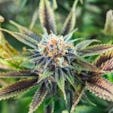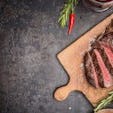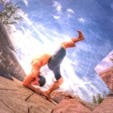Not much beats airplane travel for radiation exposure, full body inflammation, production of free radicals, wrenches in your recovery process, and an inhibition of important biological processes from muscle-building protein synthesis to muscle-repairing circadian rhythm.
It doesn’t matter how fancy your compression socks are or how many body weight squats and calf raises you do in the back of the airplane. When you’re on that plane, you’re inside a tiny metal tube bombarded by solar radiation and completely disconnected from the planet Earth’s natural magnetic field.
This is compounded by WiFi signals bouncing around the cabin (which are often now available for the entire flight), people talking on their phones and checking e-mail inside that metal tube (which happens for the entire gate to takeoff and landing to gate phase), dehydration from altitude, extremely dry filtered air, toxin-laden airplane food, bad water, germs and airborne pathogens in tight spaces and – if you’re traveling across multiple time zones – a disruption of your natural circadian rhythms.
I don’t know about you, but when I’m traveling to races and have to perform at peak capabilities, often just hours after my flight touches down, I simply can’t afford the loss of fitness, the cellular oxidation, the dehydration and the total body damage that can potentially occur every time I hop on a flight to a race. So what can you do about it? Here are 11 ways peak performers can beat jet lag.
Total Human Optimization Rule #1: Grounding/Earthing
Grounding (also known as earthing) is exposing your body to the natural magnetic frequencies released by Earth. At no time does grounding become a more effective destination strategy than when you’re traveling in an airplane, since hurdling through space 40,000 feet above the planet in a metal tube is about the most disconnected with the earth you can get.
The basic idea is that you aren’t able to discharge all the positive ions that build up via cellular metabolism, you aren’t able to absorb the negative ions you’d normally get if you were touching the ground, and this ion imbalance decreases the natural electrochemical gradient across your cell membranes, so you get disrupted cellular metabolism and inflammation.
So how do you actually earth or ground? As soon as I land in my destination I make it a point to either A) put on a pair of special shoes called “Pluggz” or sandals called “Earthrunners”, both of which have carbon plugs on them that allow for grounding without being barefoot or B) go outside in my bare feet (yes, I’m the guy in spandex or a speedo in the grassy lot behind the hotel doing barefoot yoga). I also use a device called an Earthpulse, which can be placed underneath the mattress to “ground” a bed.
Total Human Optimization Rule #2: Exercise
Multiple studies have shown that exercise can regulate circadian rhythms. So as lousy and miserable as you may feel training after a long day of travel or a long few days of international travel, the sooner you can vigorously move after arriving at your final destination, the sooner you can bounce back from jet lag and normalize your circadian rhythm and sleep.
But this doesn’t mean you have to do a killer WOD or epic run when you get to your destination. My top three choices if I’m feeling a bit blah after travel are: walking (barefoot if possible) in the sunshine or on a beach, swimming, (preferably in relatively cool water, as you’ll learn about later in this article), and as mentioned in point #1, outdoor barefoot yoga. Finally, for each hour that I’m sedentary on an airplane, I do 50 air squats near the back of the plane or in any other open space I can find.
Total Human Optimization Rule #3: Avoid Caffeine
It’s a relatively common recommendation to see the consumption of caffeine, alcohol and other stimulants discouraged for managing jet lag, and because of it’s overstimulation of central nervous system and potential for disrupting circadian rhythm even more, I absolutely agree.
Aside from the trace amounts of caffeine in the dark chocolate I occasionally consume while traveling, I simply do not go near caffeine or any other central nervous system stimulant while in route to my final destination. Since coffee and adrenal stimulants in high amounts can also inhibit testosterone and other anabolic hormones, this is a very good way to fight against fitness loss from frequent airplane travel.
Total Human Optimization Rule #4: Melatonin
Because overuse of melatonin makes is possible to shut down the body’s natural release of melatonin from the pineal gland, I do not use melatonin unless I’m traveling, in which case I take 1-3mg of a liquid melatonin or a melatonin patch 30-60 minutes prior to bed.
This shouldn’t be done while you’re on a plane, but can be useful for re-booting your circadian rhythm upon arriving at the final destination. Melatonin is also a natural anti-inflammatory, which will help decrease inflammation that you’ll build up during airline travel.
Total Human Optimization Rule #5: No-Jet-Lag Supplement
I discovered No-Jet-Lag at a Chinese herbal store in the Hong Kong airport when traveling home from a triathlon in Thailand, and upon inspecting the ingredients to verify there was nothing in it that would kill me, I tried it – following the instructions to take one tablet upon take-off, one every 2-4 hours while on the plane and then one final tablet upon landing.
And the stuff works wonderfully, both east-to-west and west-to-east. There are five homeopathic remedies listed as the active ingredients in No-Jet-Lag: Arnica Montana, Bellis Perennis, Chamomilla, Ipecacuanha and Lycopodium.
I’m no homepathic expert, but both my wife and I now use this stuff when we are traveling internationally, and have found it to be extremely effective in eliminating jet lag symptoms, especially when combined with the other strategies you’re learning about. Now that I’m here on the Onnit Academy, I’m going to give Alpha BRAIN®, or Total Human a try as a substitute for No-Jet-Lag, since it may work quite similarly.
Total Human Optimization Rule #6: Water
You’ve no doubt heard that you lose more water due to the dehydration that occurs flying in the dry air at altitude – so you obviously need to drink more water to stay hydrated and beat jet lag. But I’ve been going beyond the normal recommendations and experimenting with very high water intake – and finding that this helps out quite a bit compared to the standard disappointingly tiny cup of water handed to me by the airline stewardess every couple hours.
Instead, I’ve been drinking closer to 12-16 ounces of water each hour (nearly a full water bottle), and feeling a distinct difference in sleep, mood and energy upon landing. Just make sure to book an aisle seat, or if you’re seated in a window seat that your aisle-based airline partner is spry and willing to move every time you need to pee – or just politely ask to switch spots with them.
Total Human Optimization Rule #7: Cold Showers
Cold showers decrease inflammatory cytokines, assist with activation of brown adipose tissue for fat burning, and cause a rebound hormone response in the form of a release of adrenaline. I’ve been going so far as to actually go into the airline lounge in the airports for a 10-15 minute cold shower if I have a long layover. I also take a 2-5 minute cold shower in the hotel when I arrive at my final destination.
Splashing lots of cold water in your face is OK, but not quite as effective as cold water immersion or showering. Cold showers also have very good blood vessel expanding properties because they release more nitric oxide into your blood vessels, and the subsequent increase in glucose and oxygen uptake can dramatically help beat jet lag. For more on the benefits of cold, you can check out this article on T-Nation called “Cool Temps For A Hot Body”.
Total Human Optimization Rule #8: Curcumin
Curcumin – which is found in turmeric and curries – is a very powerful antioxidant which helps tremendously when taken on an empty stomach both before and after flying. Because of it’s ability to cross the blood-brain barrier and shut down inflammatory cytokines in neural tissue, is a potent brain anti-inflammatory and may also boost testosterone and growth hormone.
I’ve use about 1000mg of curcumin from a highly absorbable source. I recommend a brand of highly absorbable curcumin phytosome called “Rebound”. Incidentally, Onnit’s new T+ formula contains Bioperine, a black pepper extract which can actually enhance the effects of curcumin.
Total Human Optimization Rule #9: No Vegetable Oils
Yes, although it can be difficult while navigating through airports full of “healthy” stir fry and packaged crackers and health bars, you need to completely avoid vegetable oils if you want to avoid the inflammation that can occur during travel. Vegetable oils you should avoid include any roasted or heated seeds and nuts, stir fries, boxed foods and just about anything else with canola oil, soybean oil, corn oil, sunflower oil or safflower oil – as “healthy” as the food may be advertised to be.
While the 80/20 rule on vegetable oils may work much of the time, I follow the 100/0 rule with these foods when traveling – meaning they make up 0% of my diet. That usually means no airplane food for me, and instead, lots of raw seeds, nuts, chlorella, spirulina, fresh fruit, avocadoes, nori, and other healthy, real foods.
Total Human Optimization Rule #10: Sulfur
Sulfur-containing foods are very good antioxidant precursors, especially for the type of inflammation that can occur when you’re on an airplane. This include foods like broccoli, cauliflower, garlic, onions and Brussels sprouts. Supplements containing glutathione, N-Acetyl-Cystine, “MSM” or “DMSO” are also effective, but can have a nausea producing effect, so be careful with them – I don’t recommend more than a teaspoon.
Of course, if you opt for the pre-flight sautéed garlic and onions route, you may need to brush your teeth afterwards (if you plan on not creating enemies on the airplane. But if you squeeze in a few meals with these foods in the days leading up to the flight, you’ll feel much better when you land.
Total Human Optimization Rule #11: Oxytocin
Finally, oxytocin is an extremely powerful hormone that acts to lift your mood, but also acts as a potent antioxidant, antidepressant and anti-inflammatory. Although it’s most commonly known as a hormone that is released after sex in adults and during breastfeeding babies, you can actually get your oxytocin hormone fix anywhere and at any time – including when you’re traveling.
To do this, all you need to do is simply hug someone or (slightly less effective), warmly shake their hand. The simple act of bodily contact will cause your brain to release low levels of anti-inflammatory, mood-boosting oxytocin. So find the first person who’s OK with it when you get to your final destination and give them a big, loving bear hug. Or do some partner carries up the stairway in the hotel (incidentally, that’s a great travel workout). Just brush your teeth first if you did use the garlic trick you learned earlier.
Questions, comments or feedback on these 11 ways to maintain total human optimization when you travel? Leave your feedback below.
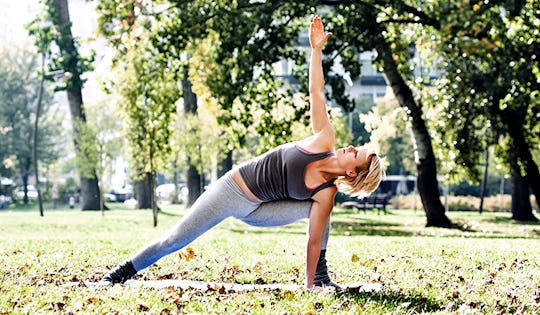


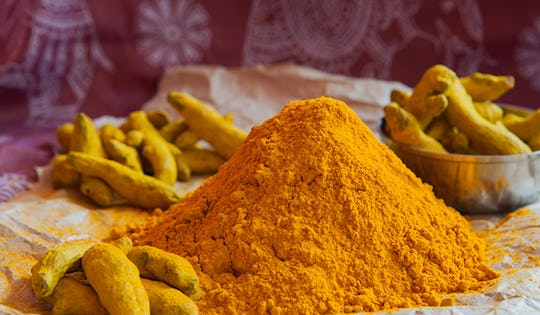
)
